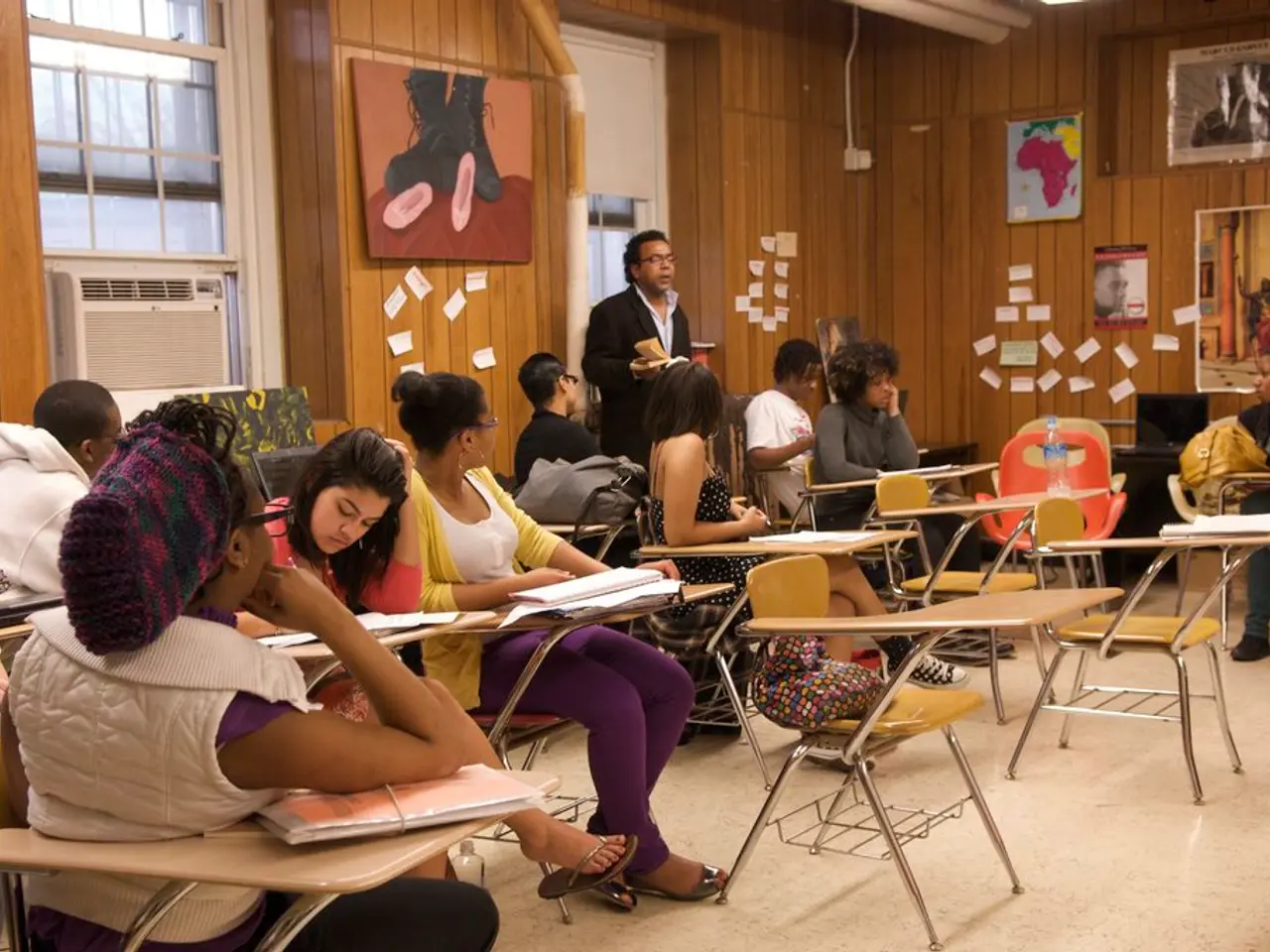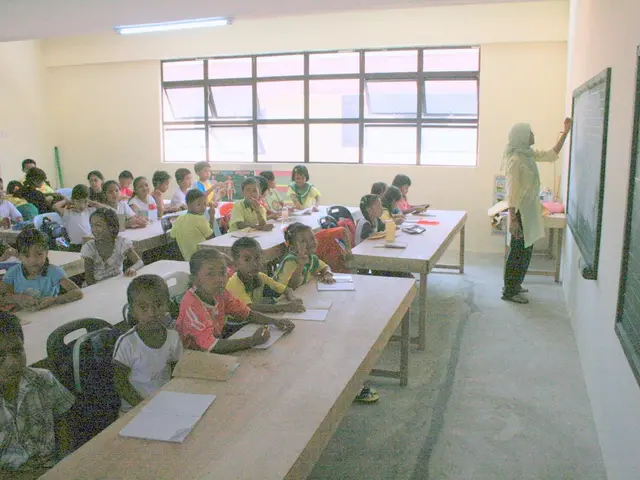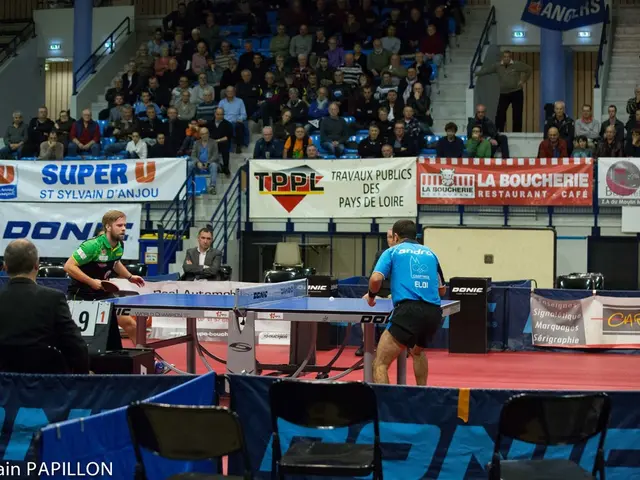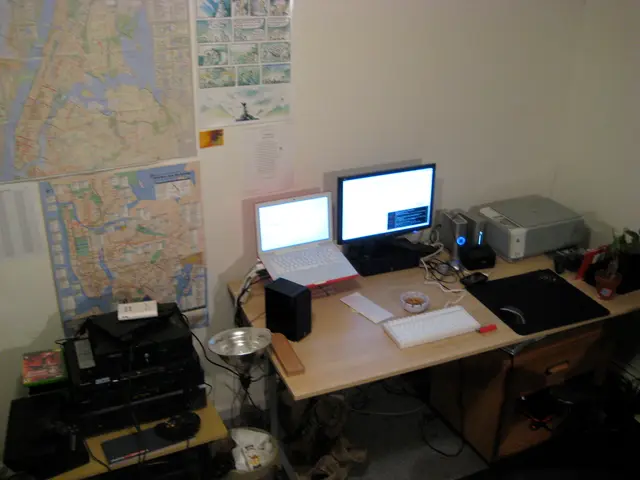Learning by Rote Often Falters - Alternative Approaches to Consider
In the modern educational landscape, a paradigm shift is underway, with a growing emphasis on active recall learning and multisensory approaches. These innovative strategies, designed to boost cognitive development and foster lifelong learning, are transforming the way students absorb and retain information.
Active recall learning, a method that encourages students to actively engage with the material and try to remember information, offers several key advantages over traditional rote learning. By actively retrieving information, students strengthen long-term memory and improve their ability to organise knowledge, leading to a deeper understanding and better retention [1][2][3]. This method also encourages active engagement and inferential reasoning, promoting critical thinking and meaningful learning [1][3].
On the other hand, rote learning, which focuses on repetition to embed facts, may result in surface-level memorization without deep understanding [2]. While rote learning has its uses, particularly in language acquisition and foundational memorization of specific content, it is less effective for complex conceptual understanding and can hinder creativity and critical thinking development [2].
Multisensory learning, a method that combines visual, auditory, kinesthetic, and tactile elements, is another promising approach. By engaging multiple senses, learning becomes more engaging and diverse, helping students remember better and understand deeper [4]. Research shows that multisensory learning boosts working memory and cognitive development [5].
Technologies like educational apps and virtual reality are changing how kids learn, offering new tools for teachers to create immersive and interactive learning experiences. Cooperative learning, where students work in groups, and gamification, which makes learning fun by adding game elements, are also becoming popular [6].
By teaching in a way that fits each child's style and interests, we create a supportive learning environment, called personalized learning. This approach, combined with deep learning techniques that help us see how different subjects are connected, makes learning and remembering easier [7]. By using these methods, teachers can help students develop important skills for the digital age, aiming to raise a generation of thinkers, problem-solvers, and innovators [8].
In conclusion, the science is clear: active recall is a better way to learn than just memorizing stuff, and multisensory learning boosts working memory and cognitive development. By embracing these methods and blending them with traditional teaching techniques, we can raise a generation of thinkers, problem-solvers, and innovators, ready to tackle the challenges of the digital age.
References: [1] Brown, P. C., Roediger, H. L., & McDaniel, M. A. (2014). Make it stick: The science of successful learning. Harvard University Press. [2] Dunlosky, J., Rawson, K. A., Marsh, E. J., Nathan, M. J., Willingham, D. T., & Ariel, D. (2013). Improving students' learning with effective learning techniques: Promising directions from cognitive and educational psychology. Psychological Science in the Public Interest, 14(1), 4-58. [3] Karpicke, J. D., & Roediger, H. L. (2008). The critical importance of retrieval for learning. Trends in cognitive sciences, 12(9), 417-423. [4] Paas, F., Renkl, A., & Sweller, J. (2004). Cognitive load theory and multimedia learning. Educational psychology review, 16(3), 173-206. [5] Paivio, A. (1971). Dual coding theory and the role of imagery in learning. Journal of Verbal Learning and Verbal Behavior, 10(5), 533-544. [6] Blumenfeld, P. C., Marx, R. W., Soloway, E., Krajcik, J., Guzdial, M., & Palincsar, A. S. (1991). Cognitive apprenticeship: Teaching the crafts of reading, writing, and mathematics. American Educator, 15(2), 10-15. [7] Bransford, J. D., Brown, A. L., & Cocking, R. R. (2000). How people learn: Brain, mind, experience, and school. National Academy Press. [8] Partnership for 21st Century Skills. (2004). 21st century skills: Learning for life and work in the digital age. Retrieved from https://www.p21.org/our-work/framework/21st-century-skills/21st-century-skills-framework
Play strategies that incorporate active recall learning, such as retrieval practice and spacing, contribute significantly to personal-growth and educational-and-self-development by boosting cognitive development and facilitating lifelong learning. Combining these strategies with immersive technologies and multisensory experiences, as seen in educational apps and virtual reality, enables a more interactive and engaging learning environment, promoting deeper understanding and better retention essential for personal-growth and lifelong learning.







